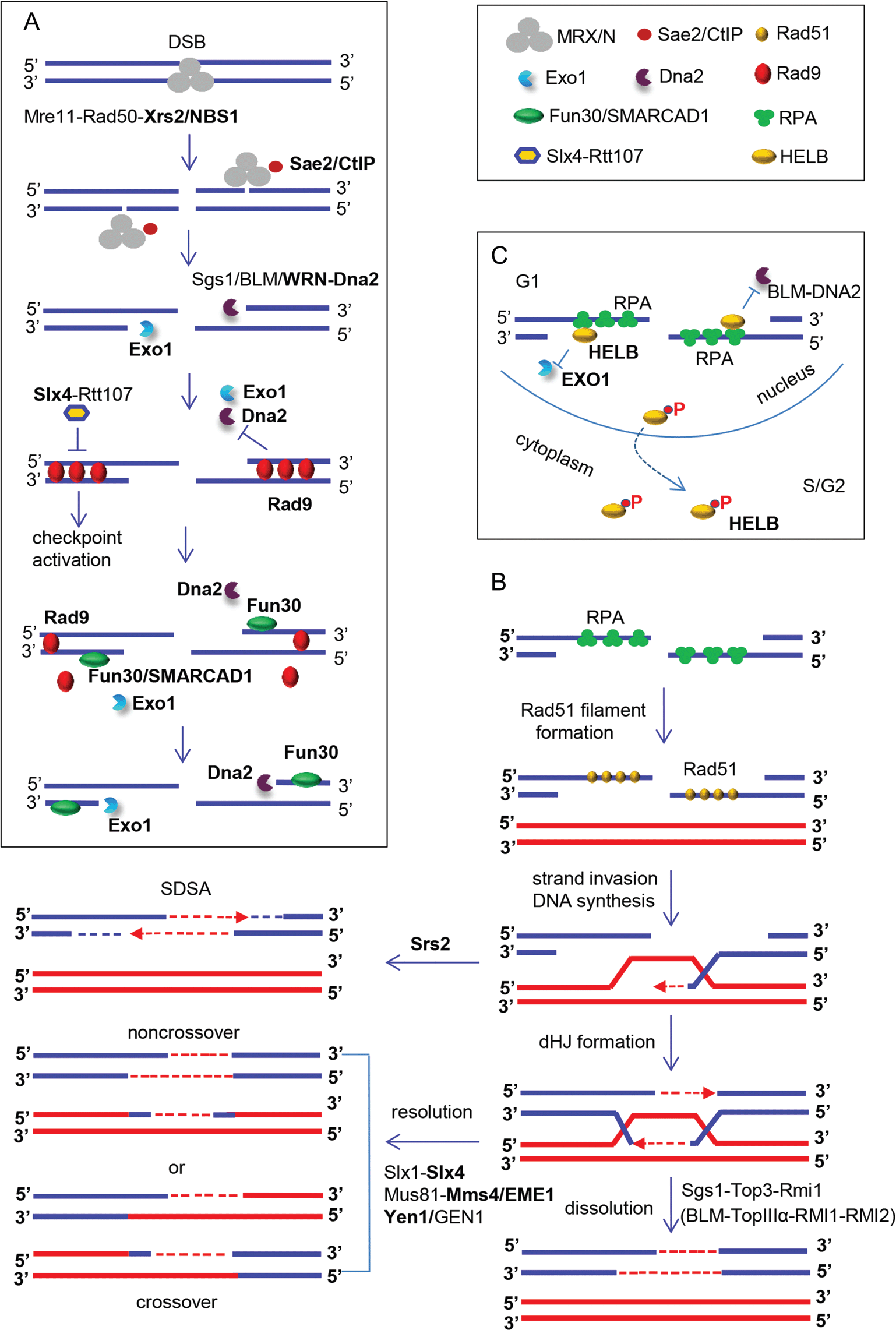博文
ABBS: Cell cycle affects homologous recombination
|||
Cell cycle-dependent control of homologous recombination
Xin Zhao, Chengwen Wei, Jingjing Li, Poyuan Xing, Jingyao Li, Sihao Zheng, and Xuefeng Chen
Hubei Key Laboratory of Cell Homeostasis, College of Life Sciences and the Institute for Advanced Studies, Wuhan University, Wuhan 430072, China
Acta Biochim Biophys Sin 2017, 49: 655–668; doi: 10.1093/abbs/gmx055
DNA double-strand breaks (DSBs) are among the most deleterious type of DNA lesions threatening genome integrity. Homologous recombination (HR) and non-homologous end joining (NHEJ) are two major pathways to repair DSBs. HR requires a homologous template to direct DNA repair, and is generally recognized as a high-fidelity pathway. In contrast, NHEJ directly seals broken ends, but the repair product is often accompanied by sequence alterations. The choice of repair pathways is strictly controlled by the cell cycle. The occurrence of HR is restricted to late S to G2 phases while NHEJ operates predominantly in G1 phase, although it can act throughout most of the cell cycle. Deregulation of repair pathway choice can result in genotoxic consequences associated with cancers. How the cell cycle regulates the choice of HR and NHEJ has been extensively studied in the past decade. In this review, we will focus on the current progresses on how HR is controlled by the cell cycle in both Saccharomyces cerevisiae and mammals. Particular attention will be given to how cyclin-dependent kinases modulate DSB end resection, DNA damage checkpoint signaling, repair and processing of recombination intermediates. In addition, we will discuss recent findings on how HR is repressed in G1 and M phases by the cell cycle.

CDK-dependent control of resection and HR
阅读原文: http://www.abbs.org.cn/arts.asp?id=4183
获取全文: abbs@sibs.ac.cn
相关论文:
1 The control of DNA repair by the cell cycle
3 A function for cyclin D1 in DNA repair uncovered by protein interactome analyses in human cancers
4 CDK6 Antagonizes p53-Induced Responses during Tumorigenesis
6 Cdk2 strengthens the intra-S checkpoint and counteracts cell cycle exit induced by DNA damage
8 Cyclin D1, cancer progression, and opportunities in cancer treatment

https://blog.sciencenet.cn/blog-592748-1165728.html
上一篇:ABBS: Reduce skeletal muscle fibrosis with miR-146a-5p
下一篇:ABBS: RARα improves kidney function